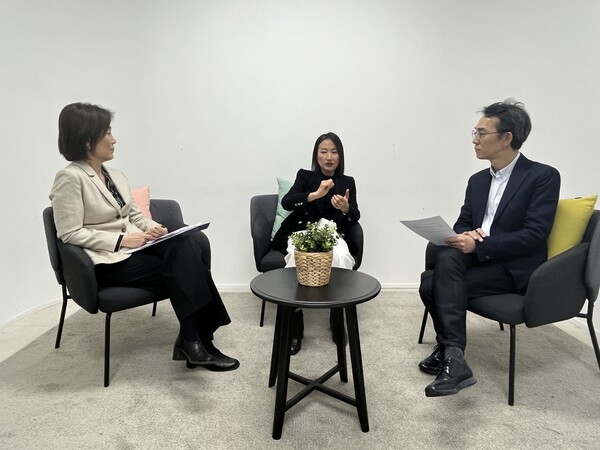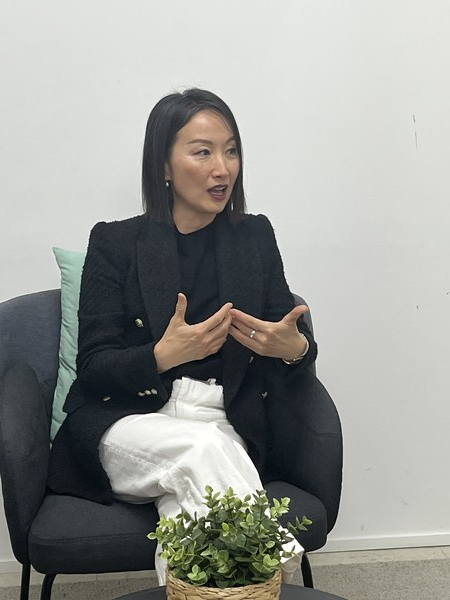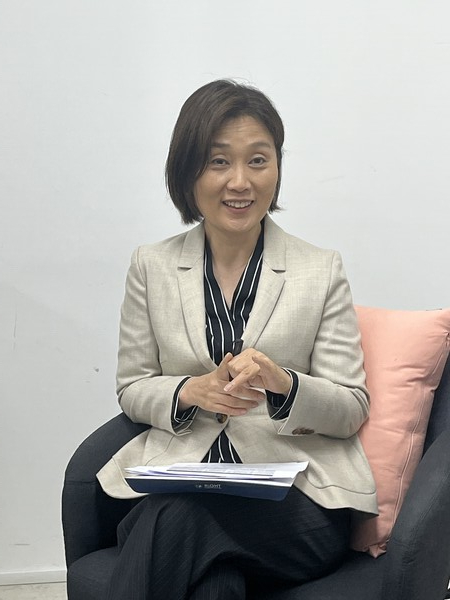In recent years, the conversation surrounding Official Development Assistance (ODA) from South Korea has gained significant momentum. As Korea positions itself as a crucial player in the international arena, its contributions to global health through ODA have become a topic of much interest.
Korea's involvement in global health initiatives is not new. However, with entities like the RIGHT Foundation pioneering a new way, here's an evolving perception of how ODA can be utilized effectively. Instead of just allocating funds, the emphasis is now on creating synergies through knowledge transfer, capacity building, and fostering partnerships.
A shining example of this is the RIGHT Foundation, a pioneering body that has been instrumental in enhancing the Korean model of ODA. While many organizations provide assistance in traditional forms, the RIGHT Foundation has taken a unique approach, integrating cutting-edge research and development (R&D) with direct financial support to maximize the impact of their contributions.
As the RIGHT Foundation continues its remarkable work, many are hopeful that Korea's ODA for global health will set new standards, not just in terms of quantity but quality and innovation as well.
In light of such a bright future, Korea Biomedical Review met with RIGHT Foundation Executive Director Hani Kim and Professor Kang Min-ah of the Department of Public Administration at Ewha Womans University to talk about the RIGHT Foundation and Korea's presence in the ODA realm.
The discussion was moderated by Park Jae-young, Editor-in-Chief of The Korean Doctors' Weekly.

Park Jae-young: I've heard that RIGHT Foundation operates in a very unique way. Can you explain what ODA approach that the RIGHT Foundation advocates for is?
Hani Kim: The Japanese government started this model first through the GHIT (Global Health Innovative Technology) Fund five years before the RIGHT Foundation was established in Korea.
The model is unique in that we use the Korean government’s ODA (Official Development Assistance) fund to support research and development (R&D), with the ultimate goal that the results of the R&D will contribute to improving public health in resource-limited settings around the world.
However, while GHIT and RIGHT Foundation may have shared goals, as a Korean entity, I believe RIGHT Foundation can take a unique approach to reflect the experiences of Korea, a relatively young donor country that had transitioned from being the poorest nations in the world.
When RIGHT Foundation was established in 2018, Korea was recognized for two things: First, its ambition to steadily increase ODA contribution, second, its capabilities in R&D.
This led to a thought that as a nation gains economic wealth and wishes to contribute to international development, perhaps there is a way that a national can contribute meaningfully to the global community through something other than purely monetary support, something that reflects the unique experience of the nation. In Korea’s case, that can be its capabilities in R&D, its strong public health system and its history as a wealthy nation that has experienced poverty and colonization.
This mix of unique experiences can be a powerful source for Korea to contribute to developing and making available essential health technologies as global public goods, not just as commodities bought and sold in the private market. Innovation anchored in the value of public health and health equity.
Kang Min-ah: In fact, there are many companies and institutions that invest in R&D.
However, the distinctive feature of RIGHT Foundation is that it is for the public value and interest from the start to the end.
There are tremendous global efforts to improve health, and they utilize high technology, promoting our health and extending our lifespan.
But while this is what we call global health, only a few focus on improving public health with the goal of equity.
Another strength of RIGHT Foundation is that it isn't just about supporting R&D; it's about doing it evidence-based.
This evidence determines which region needs which vaccine as the starting point, and then the development proceeds.
Current R&D is supply-centric. It's It should be not about giving what the supplier wants but based on what is needed on the receiving end.
Park: Recently, the international community has growing expectations of Korea in the ODA field, yet Korea's ODA is still one of the lowest GDP percentages among OECD countries. Any comments?
Kang: It's not yet high. Despite this, many countries have high expectations of Korea and seek assistance.
While many developed countries are decreasing their ODA funds, Korea has increased it substantially recently, albeit from a small base.
In a global climate of fiscal tightening, the fact that Korea has allocated a significant amount to ODA is meaningful.
Secondly, the unique perspective of shifting rapidly from a receiver country to a donor country is one that is exclusive to Korea.
Park: I understand that most of the funding for RIGHT Foundation comes from the Korean government and the Bill & Melinda Gates Foundation. Please briefly introduce how and where the funds are being utilized right now.

Kim: During the last five years, we've spent about 72.6 billion won ($54.89million) to support 55 independent projects. Most of these projects are related to vaccines and diagnostics, making up two largest categories, and we have also funded some projects related to therapeutics and digital health platforms.
In terms of award types, until last year, most of our fund was spent on supporting product development.
However, last year, we established a new award type, Evidence Generation, and have committed to support seven studies from seven different nations in Africa and Asia.
This year, we’re launching our training award program.
Park: How much of these funds are given to Korean companies?
Kim: Some portion of all of our Product Development Awards go to Korean partners who can be researchers or developers from academia, non-profit organizations, not just companies. This is a result of our funding condition for the PDAs, which is to include at least one Korean entity in the project team The intent behind this condition was the funders’ [the Korean government and the Bill & Melinda Gates Foundation] have strong interests in engaging more Koreans in global health R&D. At the moment, the number of Koreans engaged in this space is small and we want to see that number grow.
Some might ask then whether this means that the RIGHT Foundation is just helping companies to do what they normally do with their own capital. The answer is no, and here’s why. RIGHT Foundation funding requires a commitment from the grantees that ensures that the funded development does serve the needs of global public health. Specifically, an important part of the proposal evaluation is to assess whether the R&D efforts consider the target use case and the unique requirements from the end users’ perspectives in their own local contexts which are resource-constrained. For example, in addition to being highly effective and safe, is the product, be it a vaccine, therapeutic or a diagnostic test, stable in a high temperate environment? Can it be supplied at a cost that is affordable for public procurement by the World Bank defined low- and middle-income countries? Does it have a simplified regimen so that it can be easily administered? Additionally, our grantees are committed to aiming for public procurement so that the funded products are distributed within the local public health system, and reach those who are in need, not just those who could pay. This is what we mean when we say we support efforts to develop and make available essential health technologies as global public goods. For products that have a market both in high-income countries and low- and middle-income countries, we don’t interfere with the companies’ pricing policies in the high-income countries. But for the supply in the low- and middle-income countries, our grantees have agreed to our Global Access terms which include a commitment to supply to low resources settings at a price affordable for public procurement by the local governments, and to grant voluntary license to alternate manufacturer(s) if a developer chooses not to supply to countries where there’s a clear unmet need for the funded technology.
Park: Does that mean RIGHT Foundation helps companies to secure procurement after development?
Kim: No, we do not provide direct help in securing procurement. Instead, we do provide insights on the appropriate target use case or preferred product characteristics recommended by WHO to our applicants and grantees. Alignment with the available guidelines, either from WHO, other international agencies or the local governments of low- and middle-income countries is extremely important to achieve successful procurement by the local governments or international agencies. Effectiveness, safety, price, thermostability, ease of operation and implementation that I mentioned earlier are all critical considerations for product development for global public health that need alignment with the key stakeholders early on. RIGHT Foundation strives to provide insights and/or facilitate interactions with the key stakeholders who can provide such insights.
Park: It's been just over 10 years since South Korea became an ODA donor country. We've tried various supports like cash, goods, and R&D. Do we have data on which support method is the best?

Kang: Actually, it's difficult to judge which one is better or worse as it varies based on the goal.
As mentioned above, support for R&D can be a unique feature or advantage of Korea's development cooperation. Another distinction is bilateral and multilateral support. Bilateral is when we directly assist a specific country, while multilateral is done through international organizations.
For multilateral, since international organizations have been doing this for a long time, they know how to use resources efficiently and effectively.
However, one shortcoming in Korea's multilateral aid is that when we give support, there should be learnings and lessons left, but there is little to learn from.
With bilateral support, we can learn from giving help and goods and see what outcomes arise. But just giving cash through multilateral means, we don't accumulate our own data, evidence, or experience.
In my assessment of working with international organizations, I find that aspect could be improved.
Therefore, it's essential to understand not just promoting Korea's name but also identifying which factors work and don't work in ODA. This will help us understand how we can better contribute to ODA in the future.
Park: For those who still aren't quite familiar with the R&D cash support, does RIGHT Foundation have any criteria for how we measure its outcomes?
Kim: We are too young as an organization to showcase the impact of our funded studies. But I can tell you how we measure the outcome of our funded work and why I’m cautiously optimistic that the funded work will have an impact on public health. We estimate the probability of technical and regulatory success to achieve WHO PQ and how many of our funded products can be approved by stringent national regulatory authorities and achieve WHO PQ. WHO PQ is meaningful to us as it is an important step towards public procurement at the reginal or global level. While none of our funded products has achieved WHO PQ yet, four diagnostics and three vaccines are aiming to achieve WHO PQ by 2028 which will mark our 10th year. These tools can contribute to prevent or control malaria, meningitis, cholera, tuberculosis, and typhoid. These are all diseases that disproportionately affect the people in the low- and middle-income countries and represent a source of health inequity globally.
Here I talked a lot about tools, but I would like to emphasize that tools on their own are meaningless unless they’re distributed equitably in a strong public health system.
Though we are too small to include health system strengthening within our funding scope, we hope to contribute to the local health system by providing funding support for technology transfer to facilitate local production of essential health technologies and training health work force in vaccine manufacturing.
Park: Do you, as the Executive Director of RIGHT Foundation, have any personal goals?
Kim: I hope to be able to convince myself years later that the existence of the RIGHT Foundation in Korea has contributed in some small ways to demonstrating a few key principles underlying what it takes to drive R&D towards developing and making available essential vaccines, medicine, and diagnostics equitably to those who need them, not limit to the privileged few.
One of the key principles is collaboration rooted in humility and solidarity. It's important to recognize strengths that Korea can offer but also strengths of others that Korea can learn from. The partners in the low- and middle-income countries know their problems and their needs best. It’s important to listen to the local partners and learn from their insights just as Korean partners offer their strengths. I’d be happy if RIGHT Foundation can contribute to helping Korean partners become better at learning from and learning with partners around the world across regions. Here is where I believe Korea’s unique experience as a wealthy nation with a post-colonial history can be powerful.

